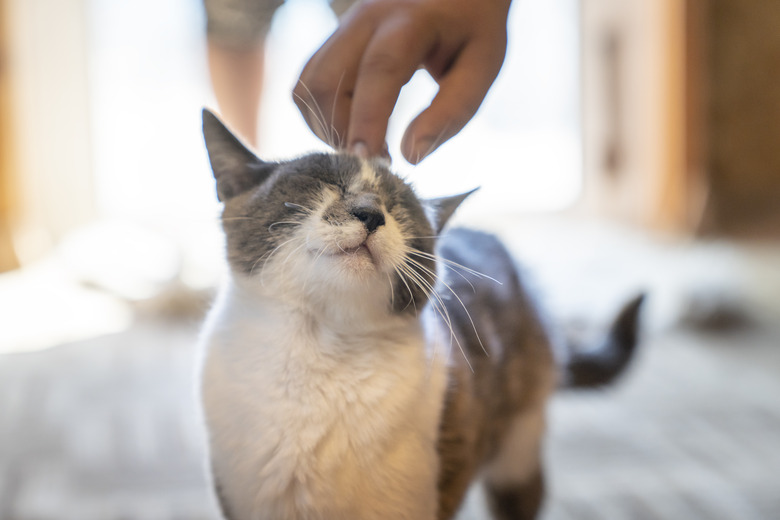What Is The Difference Between Spaying & Neutering?
While the processes are different for male and female pets, animal advocates argue for the importance of getting dogs and cats fixed. So, are spayed and neutered the same thing? The process of spaying removes a female animal's ovaries so she no longer has a menstrual cycle and cannot get pregnant. In males, neutering consists of removal of the testicles, so the animals are no longer able to impregnate other animals.
Fixing pets can have positive impacts on their health in addition to lowering the amount of animals in shelters. Many rescue pets will already be fixed when you adopt them, but when you buy from a breeder, it may be something you need to do yourself. Talk to your pet's veterinarian about health concerns surrounding spaying or neutering and to find out the best time frame for having the surgery performed.
Differences between spaying and neutering
Differences between spaying and neutering
Are you wondering, "What's the difference between spayed and neutered for a cat or dog?" It's about an animal's anatomy. Spaying, or ovariohysterectomy, is the medical term for "fixing" female cats and dogs. Pets will receive anesthesia at a veterinarian's office or spay and neuter clinic for this surgical procedure, which is somewhat invasive. An incision will be made in the animal's abdomen to take out the ovaries. The area will be stitched together with removable stitches or stitches that dissolve.
Neutering, also known as castration, is the fixing surgery for a male animal. The procedure involves removal of a cat or dog's testicles. Like spaying, an animal being fixed will be put under, and stitches will be made at the site of the small incision, though it is slightly less invasive since the procedure is being done on an external organ.
The cost difference between a spay and neuter can vary greatly, though spaying is usually more expensive since the procedure is more complex. Some veterinarians and shelters offer these services at a discounted price. Spaying or neutering tends to be done by the time an animal is 6 months old, but it can be done at almost any age. The procedure is done in an animal hospital, but it is typically outpatient, so your pet should come home the same day as long as there are no complications.
Spay vs. neuter recovery time
Spay vs. neuter recovery time
While the procedures occur on different parts of an animal's body, spaying and neutering incisions are relatively the same size, so recovery time is about the same for either procedure. It will take cats and dogs about two weeks at most to fully recover from being fixed. You will want to make sure the area stays dry and clean (no bathing for two weeks) and that your pet is not messing with the stitches. If your pet seems to be pulling at them, an Elizabethan collar or shirt designed for recovery can keep the area protected while healing.
For the first 24 hours following your pet's surgery, rest is imperative to recovery. Your pet may seem fatigued and off balance, but urging your pet to do slow exercises will help the anesthesia wear off. Bland food and water can be given in the evening following the surgery. After the first day, pay close attention to your cat or dog's activity for the next two weeks. Do not let the animal run, jump, or engage in lively play in order to avoid injuring the stitched area.
Benefits of spaying and neutering
Benefits of spaying and neutering
Overall, spaying and neutering are positive for pets and their community. Fixing your pet helps curb overpopulation of homeless pets. Spaying and neutering also offer an array of health benefits. The procedure can help prevent or reduce the risk of certain reproductive organ diseases. The appropriate time to fix your pet varies, and your veterinarian can help you make a plan to spay or neuter.
Spaying and neutering may also help your pet calm down. Fixed female cats and dogs will not have a menstrual cycle or be in heat. Hormone levels of male cats will level out as well with the decrease in testosterone.
References
- VCA Animal Hospitals: Spays and Neuters
- Baywood Animal Hospital: How to Help Your Dog Recover After Spaying or Neutering
- American Kennel Club: Spaying and Neutering Your Puppy or Adult Dog: Questions and Answers
- Animal Humane Society: Spay/Neuter Post-Surgical Care and Recovery Instructions
- VCA Animal Hospitals: Dog Behavior and Training – Neutering and Behavior
- GoodRx Health: How to Save on Your Pet's Spay or Neuter Surgery

